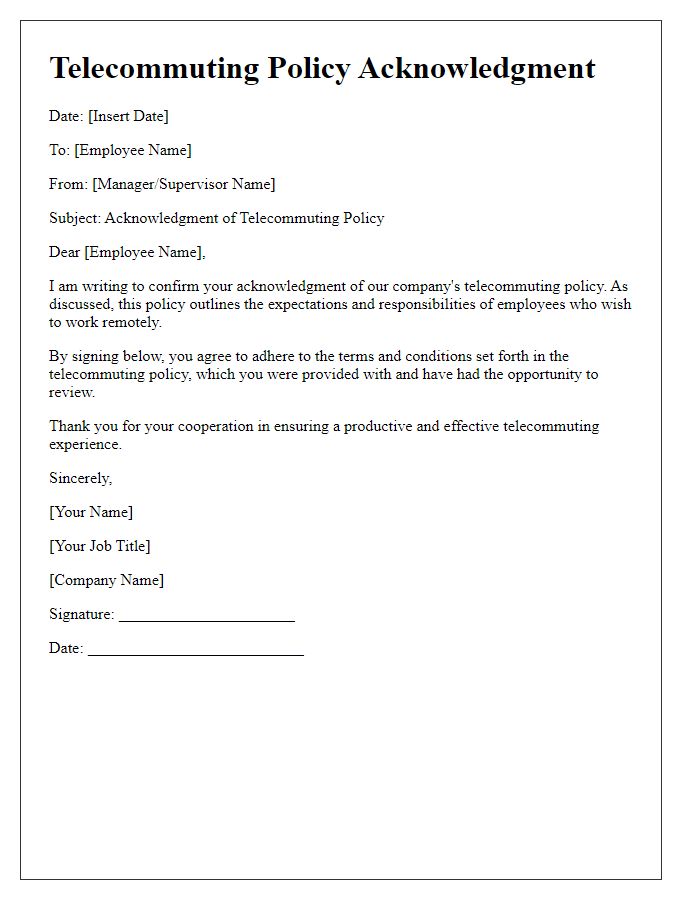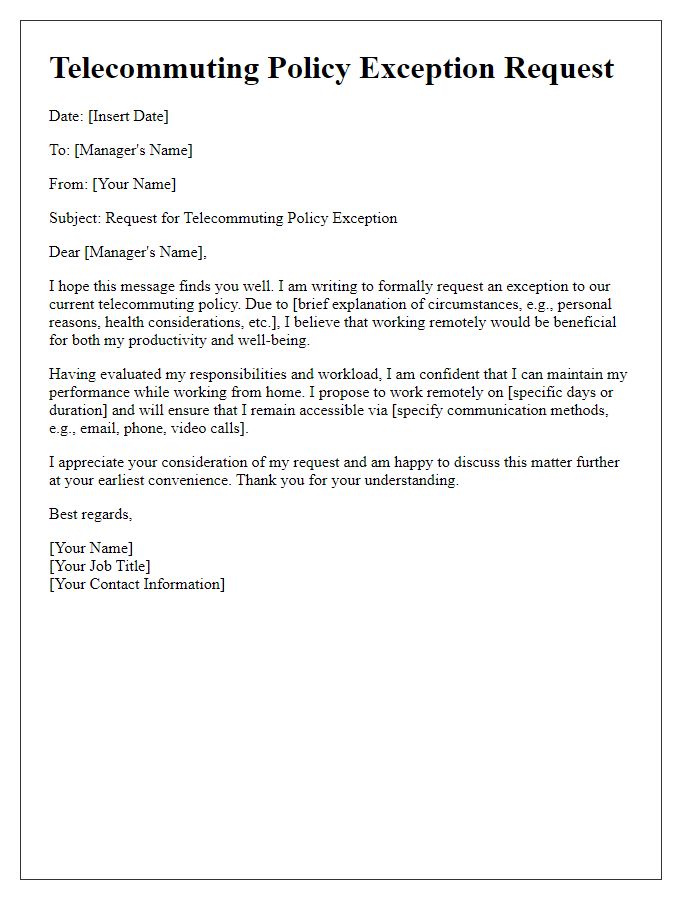In today's fast-paced world, embracing telecommuting can be a game changer for both employers and employees. With advances in technology and changing work dynamics, many companies are recognizing the benefits of flexible work arrangements. Implementing a telecommuting policy not only boosts productivity but also enhances employee satisfaction and retention. Curious to learn how to effectively implement this policy in your organization? Read on!

Purpose and Objectives
The purpose of implementing a telecommuting policy focuses on enhancing employee productivity and work-life balance while reducing operational costs for the organization. Clear objectives include increasing flexibility for employees, enabling remote work technology, minimizing office overhead (such as utilities and rent), and ensuring effective communication practices (via tools like Zoom and Slack). This policy aims to foster a results-driven culture, promoting accountability through measurable performance metrics while supporting diverse work environments (including both home office setups and coworking spaces). Regular assessments (scheduled every quarter) will ensure alignment with organizational goals and employee satisfaction.
Eligibility Criteria
Eligibility criteria for telecommuting policies often include factors such as employment status, work performance metrics, and departmental requirements. Full-time employees typically qualify, as demonstrated by a minimum of six months of service, following company guidelines. Performance evaluations scoring above a designated threshold (e.g., 80% satisfaction rate) signify readiness for remote work. Job functions must support telecommuting capabilities, encompassing roles with minimal on-site interaction, such as remote customer service or software development positions. Compliance with communication expectations, including regular check-ins (at least bi-weekly) and availability during standard business hours (9 AM to 5 PM), is essential for maintaining team cohesion. Additional considerations might involve assessing the home office environment for necessary technology, internet connectivity, and a conducive work atmosphere.
Technology and Equipment
The successful implementation of a telecommuting policy requires robust technology and equipment to facilitate seamless communication and productivity. High-speed internet connections, ideally exceeding 25 Mbps, are essential for video conferencing, cloud-based collaboration tools, and efficient file sharing. Necessary equipment includes laptops or desktops equipped with modern operating systems such as Windows 10 or macOS, along with webcams and headsets for clear audio and video during virtual meetings. Security software, including VPNs (Virtual Private Networks) and firewalls, is critical to protect sensitive company data while employees work remotely. Regular training sessions on software tools, such as Microsoft Teams or Zoom, can enhance team collaboration and ensure employees are proficient with the available technology. An effective telecommuting strategy emphasizes reliability and usability, tailored to the unique needs of employees and the specific demands of their roles within the organization.
Communication Protocols
Telecommuting policies must establish clear communication protocols to ensure productivity and collaboration among remote teams. Regular virtual meetings, using platforms like Zoom or Microsoft Teams, should be scheduled weekly to update project statuses (aiming for at least 30 minutes per session). Team members are encouraged to utilize instant messaging applications, such as Slack, for real-time communication to address urgent queries (response time set within 1 hour). Emails should be reserved for formal communications, with a recommended response time of 24 hours, ensuring documented conversations are available for referencing. Furthermore, daily check-ins through project management tools like Trello or Asana can enhance accountability, tracking progress on tasks with specific deadlines (typically within a week). Establishing these protocols fosters a culture of transparency and supports effective telecommuting practices across diverse geographical locations.
Monitoring and Evaluation
Implementing a telecommuting policy necessitates a comprehensive Monitoring and Evaluation (M&E) framework to assess its effectiveness and impact on workforce productivity. Key performance indicators (KPIs), such as employee output measured in project completion rates and quality metrics, will provide quantitative data for analysis. Regular feedback sessions with telecommuters will facilitate qualitative assessment, revealing employee satisfaction levels and areas for improvement. Tools such as time-tracking software and communication platforms, like Slack or Microsoft Teams, will be utilized to monitor engagement and collaboration. Scheduled evaluations, occurring bi-annually, will ensure the policy remains aligned with organizational goals while addressing any emerging challenges within the remote work landscape.













Comments